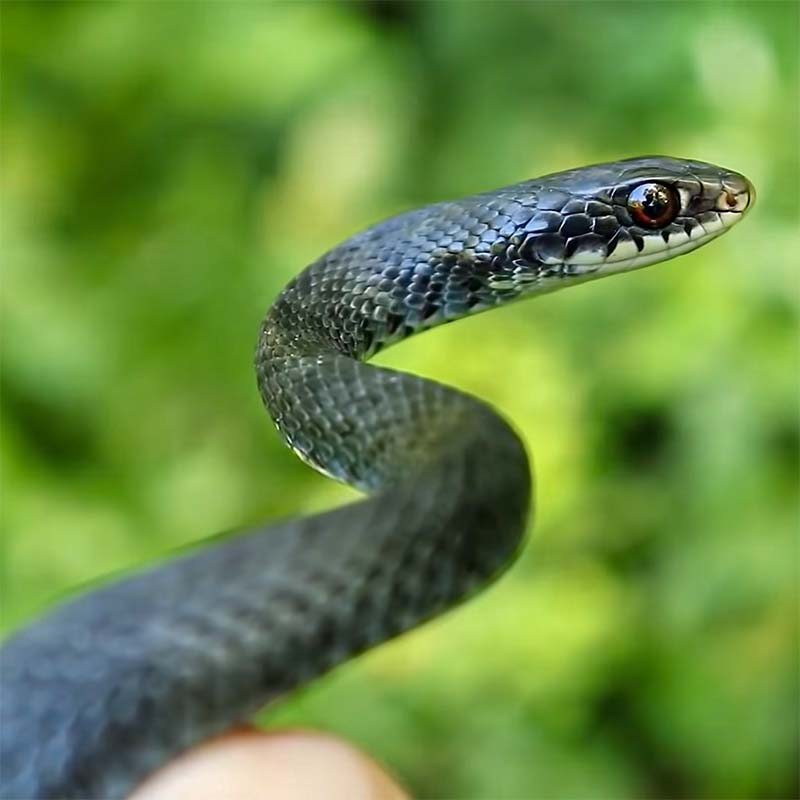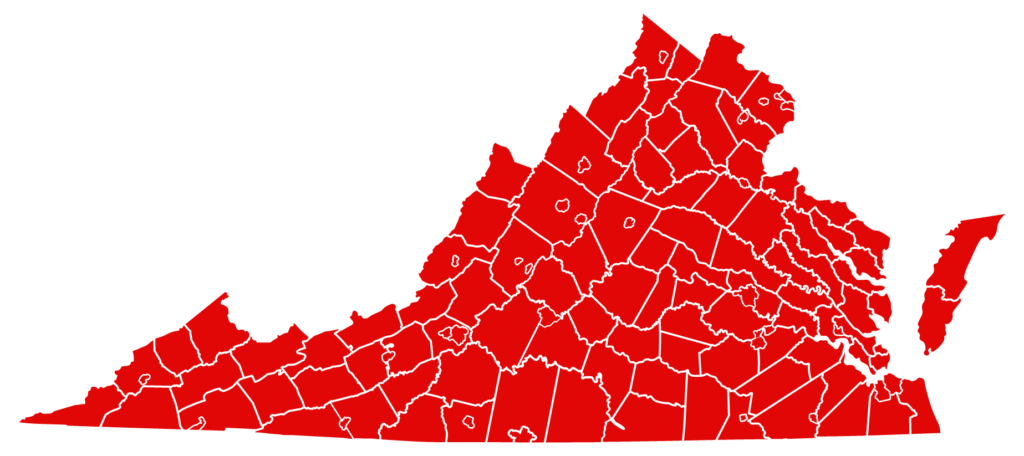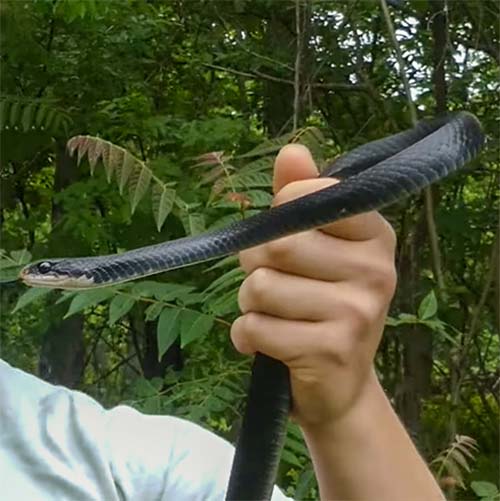
- Scientific Name
- Coluber constrictor constrictor
- Range
- All of Virginia
- Also Known As
- Black Chaser, Chicken Snake
- Venomous
- No
- Features
- Black Body With a White Throat
- Prey
- Small Mammals Such As Mice
- Litter Size
- 12 to 36 Eggs per Birth
- Life Span
- 10 Years
- Length
- 30 - 60 Inches
Quick Links for Northern Black Racer
Northern Black Racer Description
Northern Black Racer Appearance
This snake tends to get confused with the Eastern Rat Snake, it is important to recognize these differences. First, the Black Racer’s scales are smooth and not textured like the Rat Snake. This also applies to the color, as a racer’s scales tend to be a matte not glossy black, while the rat snake’s scales tend to be glossy. The racer’s head is shorter, and has a slender body.
Size
This snake is usually between 30 to 60 inches long. With juveniles averaging at 9 inches in length.
Northern Black Racer Behavior
This snake is one of the more common snakes you can find here in Virginia. This is largely do to the fact that they are 1) very plentiful and 2) they are active during the day and 3) the are fond of edge areas between forests and open areas. Places such as Virginian suburbs have plenty of.
These snakes do indeed bite, however these bites are harmless, but they could draw blood. If you do get bit make sure to wash the bite with soap and water to prevent infection.
Black racer’s love to hide in hidden areas such as crevices, logs, tall grass, etc. As such, if they encounter any human’s they would prefer to flee rather than attack. They will only attack if cornered or picked up.
It is against the law in Virginia to keep any wild snake as a pet.
Range and Habitat of Northern Black Racer’s
Range
These snakes can be found found everywhere in Virginia. In the United States, the Northern Racer can be found as far north as Maine, and as far south as Atlanta Georgia where they share territory with the Southern Racer.
Habitat
These snakes can be found in areas near water, however it is not unusual to see them near the roadside, suburbs, brush, swamps, and really anywhere. these snakes prefer the grasslands where they can see prey easily.
Diet
These snakes prefer to eat small mammals and other small snakes. These include, toads, frogs, small birds, mice, shrews, and chipmunks.
These snakes are an important part of the ecosystem, as they keep the mice and population at bay.
Myth: Black Racers Chase You
False:
These snakes do not chase people, while they do bite if grabbed they do not give chase and would rather run away. However, if the Racer’s escape route happens to be past what they are running away from, they will try to pass by the threat if the escape route is there.
Reproduction and Young
Reproduction
Mating season for these snakes occurs from April through June.
Eggs and Young
Eggs are laid about a month or two after mating, this is why they tend to lay their eggs in May or June. Racer’s lay between 12 to 36 eggs each birth.
After the eggs are laid, the snake’s leave the eggs out in the sun to incubate and will hatch in one or two months after being laid.
These snakes are usually around 2 feet long after hatching and will reach maturity between one and three years



